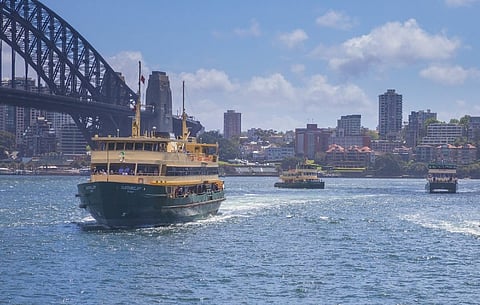

Having spent more than fifty years heavily involved with the Australian maritime industry generally as both a participant and reporter, I have seen it undergo enormous change. Probably only the United Kingdom has experienced more dramatic change.
Fifty years ago, the Australian maritime industry was intensely parochial and only just starting to shake off the dead hand of British mercantilism. There were probably 150-plus locally-flagged coastal and international cargo ships, a handful of ships trading to East Asia and the Pacific Islands, a handful of old-fashioned ferries, and a primitive fishing industry. Steel cargo ships were still being built in a number of yards and containerisation and large-scale bulk shipping were just getting started.
Several iron ore, coal, bauxite and fishing booms and busts later, the local maritime scene is significantly different. The Australian-flagged cargo shipping fleet has declined by 90 per cent, yet Australian port activity has increased exponentially. From a handful of locally-owned steam and primitive shaft drive diesel tugs, Australia now has a substantial fleet of the latest, largely foreign-owned, ASD tugs. They serve many more and much larger ports, including the world's largest and busiest coal and iron ore export ports.
The fishing fleet has simultaneously declined by 75 per cent without significantly reducing the catch. From soggy old, ill-equipped wooden boats, the fleet now comprises world-leading, fast and efficient boats almost all of which have been developed, designed and constructed locally. The fishery is mostly managed to achieve maximum sustainable yield.
Largely arising out of the fishing industry, Australia's world-leading aluminium ship design and building industry has grown rapidly since the late seventies. Apart from warships, Australia builds very few steel vessels but it exports a stream of aluminium ferries, patrol boats and tourist vessels world-wide. It is also a major exporter of designs of aluminium and FRP craft, mainly of the faster classes.
While aluminium craft form a major export sector, many ferries, tourist vessels, fishing and patrol boats are built for local consumption. Harbour and tourist ferries, whale watchers and dive boats now represent a major industry. The whole commercial sector is governed, with a fairly light touch, by the Australian Maritime Safety Authority, which is a remarkably effective bureaucracy. It helps keep the sector commendably safe with generally reasonable and rational rules.
Alongside the rapid advances in vessel design and construction, a homegrown marine equipment industry has developed. Deck equipment, winches, cranes, and similar are manufactured for local consumption and export. So too are passenger seating, fire and weather insulation, windows, ceilings, marine evacuation systems, paint treatments, and much more. Even maritime publications and global news services!
The Australian maritime industry has come a long way very quickly and is now the global leader in several sectors, most particularly fast aluminium vessels and multi-hulls of all kinds. Baird Maritime and its predecessor magazines have covered the industry closely for 44 years, and Baird Maritime continues to keep its readers apprised of its developments.
– "As regards shipping and shipbuilding, Australia has produced so many 'firsts'."
– by Kent Stewart, founder of maritime consultancy Maritime Engineers and Baird Maritime's resident expert on commercial shipping and the offshore industries
– "It initially was focused on the offshore oil and gas sector but has quickly expanded to cover all specialist shipping including Antarctic operations, towage, science, hydrographic, defence, ferries and more."
– by John Lord
– "It spelt the end of those fine fleets of British cargo liners and the sight of the Red Ensign in Australian and New Zealand ports, collateral damage as the UK re-aligned its trade to its nearest neighbours."
– by Michael Grey, former long-term editor of Lloyd's List
– "It is a very disappointing example of a state government shooting itself in the foot by declining to participate in a huge generational leap forward that would really put it on the world map as an innovative, technologically advanced centre of excellence."
– by Neil Baird, Co-Founder and former Editor-in-Chief of Baird Maritime
Remember to come back every day to see the latest news, opinion and vessel reviews!
Any news or views about the Australian workboat industries? Send it through to editor@baird.com.au ASAP (between now and June 11), so we can add it to this current edition of Australia Week!
We are after:
